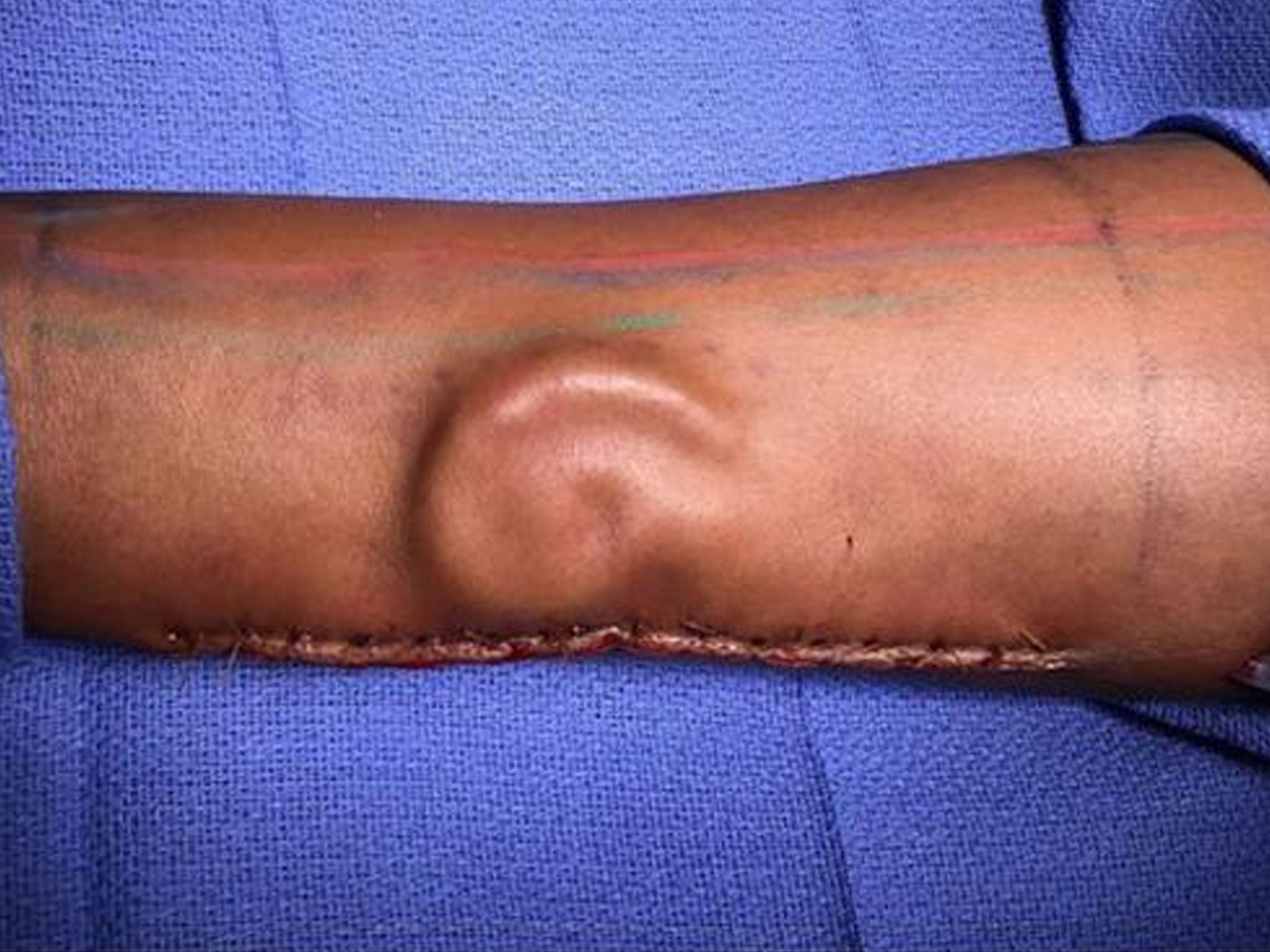Army doctors grow new ear in soldier's arm in 'first of its kind' procedure
Plastic surgeons use the army private's own cartilage

Your support helps us to tell the story
From reproductive rights to climate change to Big Tech, The Independent is on the ground when the story is developing. Whether it's investigating the financials of Elon Musk's pro-Trump PAC or producing our latest documentary, 'The A Word', which shines a light on the American women fighting for reproductive rights, we know how important it is to parse out the facts from the messaging.
At such a critical moment in US history, we need reporters on the ground. Your donation allows us to keep sending journalists to speak to both sides of the story.
The Independent is trusted by Americans across the entire political spectrum. And unlike many other quality news outlets, we choose not to lock Americans out of our reporting and analysis with paywalls. We believe quality journalism should be available to everyone, paid for by those who can afford it.
Your support makes all the difference.Two years ago, Army Private Shamika Burrage almost died when she was ejected from her car during a crash in Texas. Afterwards, when she woke up in the hospital, her entire left ear was gone.
But the now-21-year-old is on the path to recovery. And due to a procedure hailed as the "first of its kind" in the Army, an ear was reconstructed and "grown" under the skin of her right forearm, according to the Army.
No prosthetics were needed. Instead, plastic surgeons used the soldier's own cartilage.
The ear was later attached to Pte Burrage's head by surgeons at William Beaumont Army Medical Center in El Paso. The Army said Pte Burrage recovered her hearing and that the operation was a success, according to a statement.
The total ear reconstruction involved doctors carving a new ear out of cartilage harvested from Pte Burrage's ribs, the statement said. The ear was then placed under her forearm skin to let it grow.
The procedure is one of the most complicated ear constructions in the US, according to an ABC News report, and allows for the formation of new blood vessels in the cartilage.
This means Pte Burrage will also have feeling in her new ear once rehabilitation is complete, the Army's statement said.
"The whole goal is by the time she's done with all this, it looks good, it's sensate, and in five years if somebody doesn't know her they won't notice," Lt Col Owen Johnson III, the chief of plastic and reconstructive surgery at the medical centre was quoted as saying in the statement.
"As a young active-duty Soldier, they deserve the best reconstruction they can get," he said.
Losing her ear was just one of many injuries Pte Burrage sustained in 2016 when the front tire of her car blew out, causing the car to skid 200m before flipping multiple times.
Pte Burrage had been driving with her pregnant cousin from Mississippi to Fort Bliss, Texas, when the crash happened. While her cousin managed to escape with only minor wounds, Pte Burrage suffered head injuries as well as compression fractures in the spine.
"I was on the ground, I just looked up and (her cousin) was right there," she said in the statement. "Then I remember people walking up to us, asking if we were okay and then I blacked out."
Had she received medical assistance 30 minutes later than she did, doctors said she would have bled to death.
After the accident, Pte Burrage said she didn't feel comfortable with how she looked and was presented with plastic surgery as an option. While she was initially scared about going through with the reconstruction, she said she wanted to see what doctors could do.
"I was going to go with the prosthetic, to avoid more scarring but I wanted a real ear," Pte Burrage said.
Although this was the first time this kind of ear reconstruction was attempted by an Army surgeon, the idea of growing ears is not new to science or medicine.
In the 1990s, an alarming, but real, photo of a mouse with what appeared to be a human ear attached to its back was widely circulated. Now known as the Vacanti Mouse, the critter was part of research studying how feasible it was to grow human ears made of cartilage.
There have also been at least two cases in which doctors performed procedures similar to what Pte Burrage underwent. In 2012, a woman lost her ear to cancer and grew a replacement under her forearm skin, ABC News reported. A few years later, doctors in China attempted to grow an ear in the arm of a man who had been in a car accident, according to China Daily.
For Pte Burrage, she may have both her ears, but her recovery is not yet over. In addition to the transplant, epidermis from her forearm will be used to cover scar tissue in the area immediately around her left jawline, the statement said.
With only two more surgeries left, Pte Burrage said she's feeling more optimistic and excited.
"It's been a long process for everything, but I'm back," she said.
Join our commenting forum
Join thought-provoking conversations, follow other Independent readers and see their replies
Comments